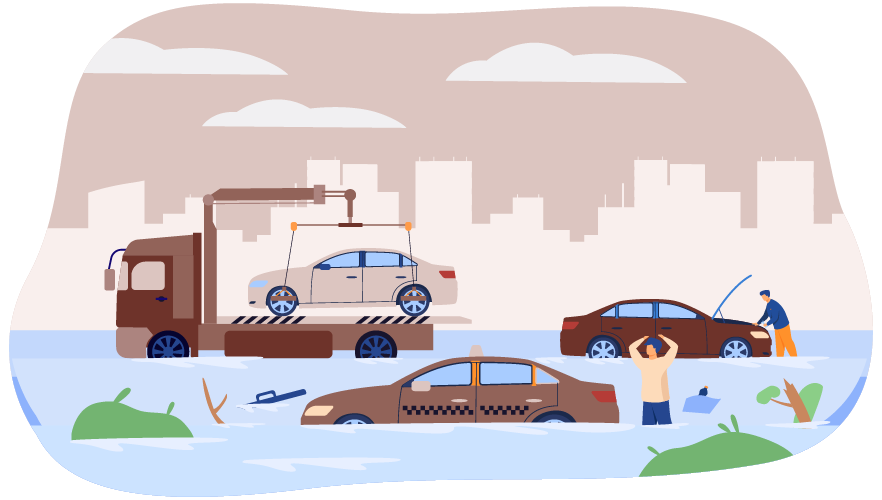Latest & innovative architectural design and concept ideas
Architecture concept design ideas that will blow your mind
Be it electric trains or even the buildings that seemingly reach for the clouds with their multiple stories; all of these might have seemed like an idea of a mad scientist coming out of his imaginary playbook in the past, but not anymore. They’re now the reality that we are chasing after. There is a replacement of hand-labored craftsmanship by rapid machine-backed industrialization. And this has reinvented all the basic premises of architecture concept design ideas. We have innovatively sound technologies that are capable of bringing even our wildest imaginations to life. All our ideas are now practically possible.
Almost every architect or designer is looking to improvise their vision. They are on a mission to bring projects to life that are futuristic and contemporary. Additionally, architecture was once used to portray sentiments or follow revivalist patterns. But it is now shifting steadily towards being experimental, functionally worthy, and minimal.
Architecture concept designs to watch out for in 2022!
Contemporary architecture that we exploring abundantly in recent years is constantly emerging. They are evolving to be more unique, sustainable, and out of the box. This predominantly revolves around one particular idea; to break away from the previously known structures of the past.
Some of the turnarounds that contemporary architecture emphasizes are as follows:
Open floorplans
Form over function has become a basic premise of design these days. People are evolving with their sense of aesthetics these days. Consequently, this has made way for large and spacious floorplans. This distinctive element also makes way for bright spaces brimming with proper ventilation. The construction revolves around open rooms flowing from one to the next. The dining area flowing into the living space is a classic example.
Lesser doorways with subtle distinction have become the theme. A glass partition, a curved wall, or a shift in the shape of the rooms from one another differentiates the utility of one space from another. No more design aims that revolve around compartmentalizing sections or departments. Instead, emphasize focus on concepts that intersect seamlessly.
Drastic shift in the building materials

Inventive experimentation is what architecture concept designs are chasing after these days. And the main trait that bucks traditions are the introduction of new-age elements and materials. These are integrated into the core scope of construction. Reinforced concrete is one of the materials that are highly sought after. This is because of the value it brings to the construction of contemporary designs. They bring a visually appetizing setting to any building in the most economic way possible. They thus remain a bridge for the architects to bring any idea imaginable to live.
Other elements like recycled glass, bamboo, recycled steel, reclaimed wood, and green concrete are all getting their fair share of publicity. Consequently, architects chase this to bring about a unique finish to their work of art while also being sustainable in nature.
Asymmetric designs
Contemporary architecture concept design ideas are now playing their hand at bringing smooth shapes of asymmetrical compositions to life. They are not focusing on balance or symmetrical finish. Abstract elements are also implemented in the design of the interiors to complement the same. Our team at YCSPL has been known in the industry for bringing the wildest imaginations to reality. We do this by going with designs that stand out.
Sustainability and environment considerations
As a society, we are growing more aware of the deadly consequences that we’re prone to face. This is the case if we don’t make sustainability a way of life. And this also has its fair share of impacts on the architects. They are now putting a lot of thought to bring their designs to life while being ecologically considerate. Because of this, relating any building to the natural landscape that they are surrounded by is also taken into account.
Energy efficiency; reduction of greenhouse gases; environmental responsibility in day-to-day functioning, etc; are all among the top concerns that architects find solutions for with every design they pen.
Openness to curved lines
The willingness to explore and experiment with new forms and experiences remains the soul of contemporary designs. Architecture services are rapidly adapting themselves to this shift. Design concepts are shifting from the usual use case of straight lines. They are more open to designing around curved lines. Moreover, these rounded edges and the steering away from straight lines give more space to pristine minimalism in ways that the architects deem fit.
These lines further derail us from the imagination of the simple cube structure of the interiors. We are now in the process of assembling these cubes in unique combinations. This results in the surprising composition of volumes. These unusual layouts presenting creative interiors are eye-catching and exciting. They thus result in a living space that’s far away from the past standards.
Animated architecture
Animated architecture trends focus on making the building feel more alive and interactive. This involves a lot of sophisticated elements. This may include water fountains of widely varying forms or even colored jets, interactive exterior lights that can engage with the passers-by, etc.
If you’re looking for architecture concept design ideas for inspiration, you can check our portfolio of works for more.
Geometric simplicity
The fussy details of the exteriors, and unwanted patterns are all far away from meeting the aesthetic norms of the present. Minimalism and simplicity are the core objective of any construction plan today. This results in a luxurious finish by simply eliminating things that don’t fit.
Usage of unique materials while also showcasing them in a simple manner makes the environment look attractive. At the same time, geometric simplicity does not mean that the design is going to be full of simple lines. Breaking away from simplicity by careful utilization of curved lines as need be is what architecture companies are trying to achieve.
At YCSPL, we have a team of dynamic experts. They are all passion-driven with an eye for detail and a heart for sophistication. We’re thus capable of designing any dream and bringing them to life. All our designs are time-tested and are going to be looked up to even in the future.



